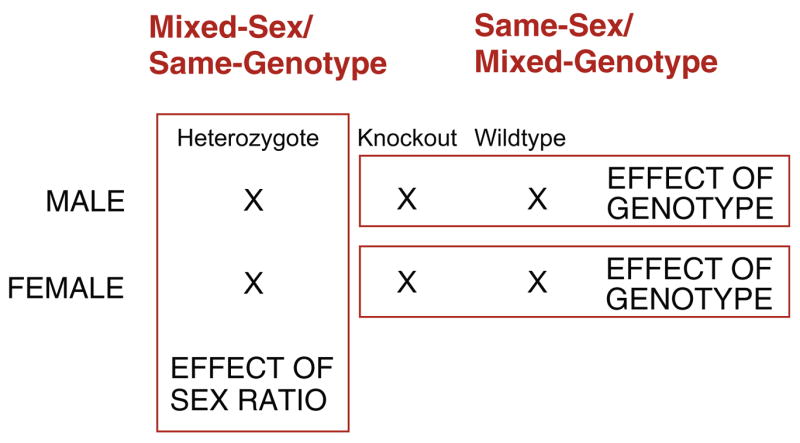Fig. 2.

In most instances genetically-modified mice arise from the mating of individuals heterozygous for a null mutation. This results in litters that are a mixture of different numbers of male and female young of various genotypes. Thus, the sex ratio and genotype ratio of the litter can be a confound in interpreting the results of any phenotype measure, molecular or behavioral. However, by sexing and genotyping pups at birth and then re-constituting litters of equal numbers of specific young, it is possible to deconstruct the behavioral neural phenotype of the adult. The red-outline blocks represents groups that can be used to establish the effect of sex (e.g., Mixed-Sex/Same-Genotype groups) versus the effect of genotype (e.g., Same-Sex/Mixed-Genotype groups). Finally, by creating Mixed-Sex/Mixed-Genotype groups it is possible to study the precise interaction of sex and genotype in the development of the phenotype of interest. (For interpretation of the references to color in this figure legend, the reader is referred to the web version of this article.)
